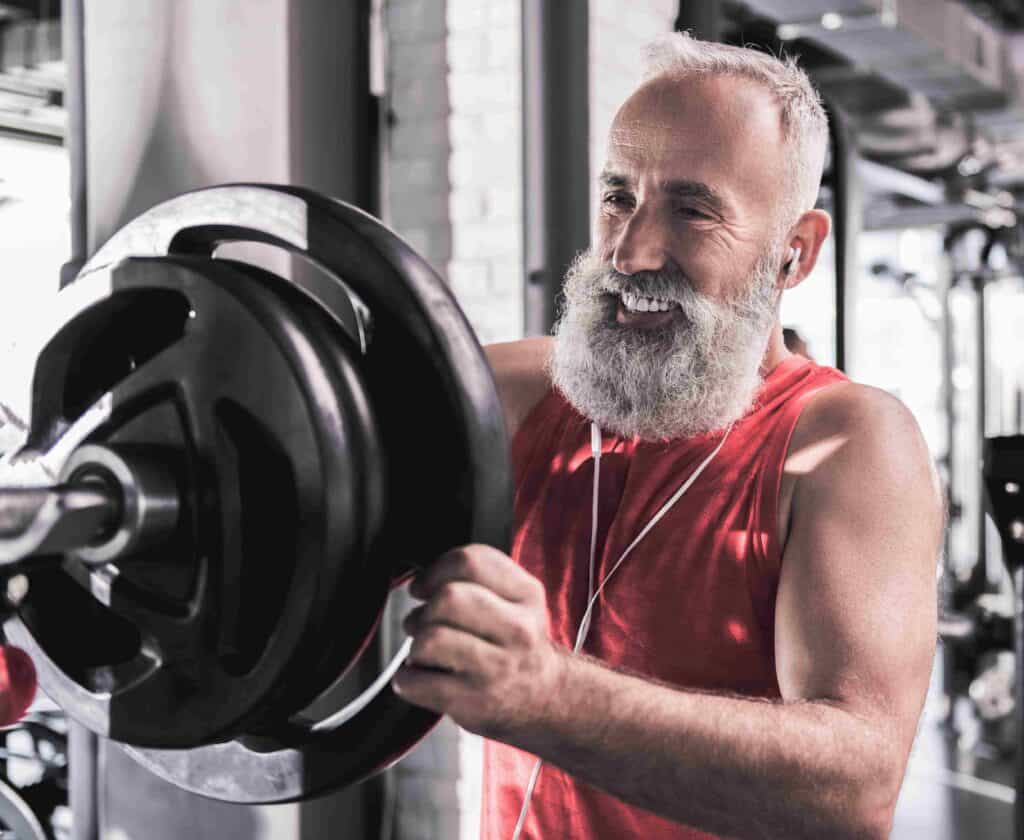The Benefits of HIIT Workouts
Gone are the days when exercising meant going on a slow jog, bike ride, or lifting weights.
Powered by gym programs like CrossFit, high-intensity interval training (HIIT) workouts are surpassing traditional aerobic workouts in popularity.
Why are HIIT workouts so popular? Advocates claim that HIIT workouts are better than traditional aerobic exercise at supporting weight loss, building strength, and preparing your body for sports. While Olympians have been using HIIT methods for over 100 years to reach their peak physical performance, everyday exercisers are reaching their personal fitness goals quickly using HIIT training.
What are HIIT Workouts?
High-intensity interval training (HIIT) workouts alternate between fast-paced, high-effort exercises, like sprinting, and periods of low intensity, like jogging or rest.
HIIT workouts are anaerobic, meaning that you don’t have enough oxygen to exercise for long. On the other hand, with aerobic workouts, such as long jogs, your muscles are well-oxygenated, allowing you to carry on without stopping.
Anaerobic exercise stresses your muscles, pushing them until they run out of energy. This stress triggers your muscles to grow and better tolerate anaerobic activity, improving your performance.
HIIT workouts descend from interval training—a method that varies the speed and intensity of exercise. The first person to use interval training was British amateur runner Joe Binks in 1902. He used sets of sprints to train for the mile, bringing his time down to 4 minutes 16 seconds.
HIIT training quickly caught on with elite athletes. In the 1912 Olympics, backed by a program of interval training, Hannes Kolehmainen won three gold medals in middle and long-distance races.
For years, interval training remained an open secret among the world’s best athletes. Then in 1996, a breakthrough HIIT method called Tabata training was developed to improve the performance of Olympic speed skaters. It consists of maxing out on cardio and strength exercises for 20 seconds, followed by 10-second rest periods. Then, in 2000, CrossFit gyms popularized HIIT workouts, bringing them to thousands of locations globally.
Weight training is a type of HIIT workout. It has the same basic structure as repeated sets. Many CrossFit HIIT workouts often involve weights like kettlebells. There are vital differences though. HIIT workouts involve shorter rests between sets than traditional weight training and prioritize high exertion over the number of repetitions.
What Is the Difference Between Interval Training and HIIT Workouts?
There is one key difference between interval and HIIT workouts. Interval training includes a variety of peak intensities, whereas HIIT workouts reach 80% or more of your perceived exertion rate (PRE), heart rate, or the amount of oxygen your body can absorb in a minute (VO2 max).
When you exercise, your heart rate increases as you increase your exertion. You can track this with wearable heart rate monitors, smart watches, exercise equipment with built-in monitors, or the old-fashioned way – by feeling your pulse and watching a clock. To find your target heart rate, first take your pulse when you’re exercising at maximum exertion, then calculate 80% of that number.
Target Heart Rate = Maximum Heart Rate * .80
VO2 max is the most accurate measure of intensity. It’s typically conducted in a doctor’s office with a cardiopulmonary test that monitors oxygen intake while exercising. The intensity scale ranges from 0% to 100% of a person’s VO2 max. Some heart rate monitors and smartwatches can estimate what level of VO2 max you are performing at based on your heart rate. For HIIT workouts, you want to perform at 80% of your VO2 max.
RPE is a subjective self-report. The modified scale works on a scale of 1-10 with 10 being the most intense activity. One test of how hard you are exercising is to see how difficult it is to talk while working out. For HIIT workouts, you want to have your RPE to be at 8 on the scale. At this level, you shouldn’t be able to talk.
| RPE Rating | Subjective Intensity |
| 0 | Rest |
| 1 | Minimal possible exertion |
| 2 | |
| 3 | Mild exertion |
| 4 | |
| 5 | Moderate exertion |
| 6 | |
| 7 | Vigorous exertion |
| 8 | |
| 9 | Intense exertion |
| 10 | Maximum exertion |
The Benefits of HIIT Workouts

Historically, competitive athletes have used HIIT workouts. But what can they do for the rest of us?
As it turns out, HIIT is beneficial to:
- Improve strength
- Increase heart and lung conditioning
- Prevent wear on the body
- Reduce blood pressure
- Lower cholesterol levels
- Strengthen bones
- Slow aging
Many of these benefits are not exclusive to HIIT exercise but are found in all workouts. Exercising is one of the best things you can do for your body.
The question remains: Are the benefits of HIIT workouts greater than the benefits of cardio workouts?
Compared to HIIT, continuous cardio:
- Has a 60% to 70% exertion level.
- Burns more calories if continuously used.
- Lowers your resting heart rate and blood pressure.
- Improves VO2 max more than endurance running.
There are claims that HIIT workouts are more effective than continuous cardio workouts at helping you lose weight, but these claims aren’t universally backed by the evidence.
What is beyond dispute is that HIIT workouts provide an alternative to cardio workouts in less time.
HIIT workouts are easy to modify with different exercises, durations, and rest breaks. For people who easily get bored by exercise, HIIT provides variety to keep them engaged.
The Drawbacks
Comparing the benefits of HIIT workouts versus continuous cardio isn’t complete without addressing the drawbacks of both: Injuries.
There are more acute injuries with HIIT workouts. Over 40% of people who do HIIT workouts report injuries, with the most common injuries targeting knees, ankles, and shoulders.
It’s recommended that you warm up, stretch, and exercise to prevent injury. If you have a heart condition, you should consult a doctor before starting a HIIT regimen because high-intensity exercise can increase the risk of cardiac issues.
On the other hand, continuous cardio comes with the risk of injury from overuse, including stress fractures, exhausted muscles, and sore joints.
Which Method Is Better?
You don’t have to choose one exercise method over another. You can alternate between traditional cardio, weight training, and HIIT workouts.
While there is no perfect workout for all purposes, HIIT workouts can be the spice that provides variety in your routine. It can be the special ingredient that keeps you coming back for more and the driver of your fitness success.




